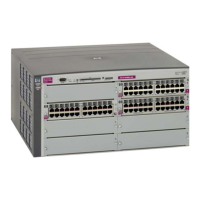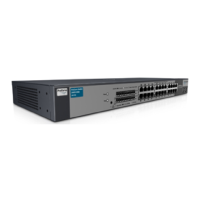Ports and trunking 30
Ports and trunking
Introduction
The first part of this chapter describes the different types of ports used on the switch. This information is useful in
understanding other applications described in this guide, from the context of the embedded switch/server
environment.
For specific information on how to configure ports for speed, auto-negotiation, and duplex modes, see the port
commands in the HP GbE2c Ethernet Blade Switch for c-Class BladeSystem Command Reference Guide.
The second part of this chapter provides configuration background and examples for trunking multiple ports together.
Trunk groups can provide super-bandwidth, multi-link connections between switches or other trunk-capable devices. A
trunk group is a group of links that act together, combining their bandwidth to create a single, larger virtual link. The
switch provides trunking support for the five external ports, two crosslink ports, and 16 server ports.
Ports on the switch
The following table describes the Ethernet ports of the switch, including the port name and function.
NOTE: The actual mapping of switch ports to NIC interfaces is dependant on the operating system software,
the type of server blade, and the enclosure type. For more information, see the HP GbE2c Ethernet Blade
Switch for c-Class BladeSystem User Guide.
Table 7 Ethernet switch port names
Port number Port alias
1 Downlink1
2 Downlink2
3 Downlink3
4 Downlink4
5 Downlink5
6 Downlink6
7 Downlink7
8 Downlink8
9 Downlink9
10 Downlink10
11 Downlink11
12 Downlink12
13 Downlink13
14 Downlink14
15 Downlink15
16 Downlink16
17 XConnect1
18 XConnect2
19 Mgmt
20 Uplink1
21 Uplink2
22 Uplink3
23 Uplink4
24 Uplink5
